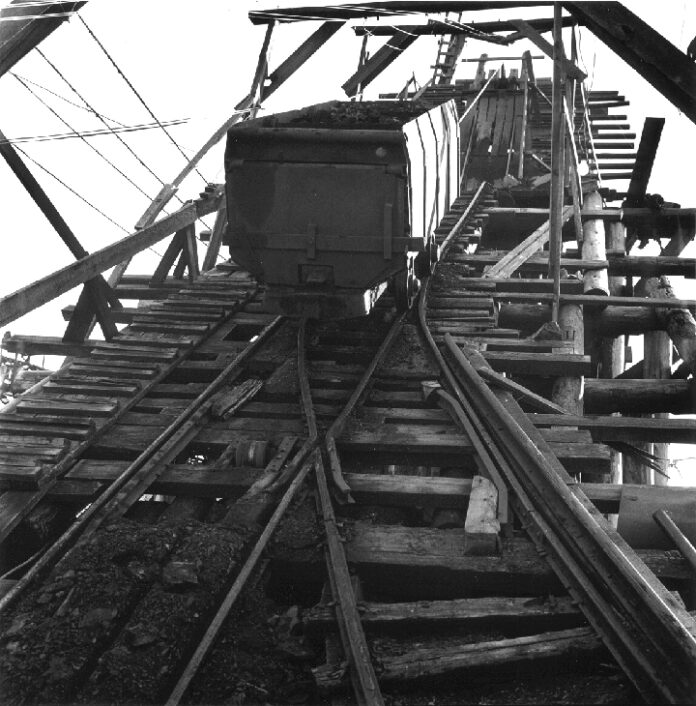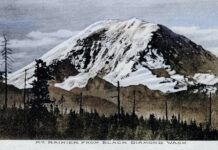In 1974, when the Rogers No. 3 mine in Ravensdale had but one year remaining in its 17-year life, little had changed in over a century of coal mining. Coal was still dug in tunnels deep underground. Rail cars still brought coal to the surface portal. But overcoming gravity remained a miner’s most formidable job. The previous two weeks of columns showed a miner at the bottom of the slope, and the next featured two miners on a rail car emerging from the portal.
Washington State’s coal seams were formed in sedimentary layers 53 million years ago and laid flat as a pancake. The coal’s origin was decaying vegetation that proliferated during tropical eras when plant life flourished. As climates changed, successive flooding resulted in thick layers of silt that covered the decaying vegetation. Under time and pressure, the decomposing carbonaceous matter slowly turned to peat, then lignite, and finally coal. Remarkably, over a span of three million years, the climate changed multiple times, resulting in 18 distinct coal layers within 6,000 feet of bedrock formation known as the Franklin series in an area stretching from Ravensdale through Black Diamond to Cumberland.
With the clashing of tectonic plates, the Cascade mountain range grew, twisting and sometimes turning local coal seams to a near vertical pitch, as was the case at Palmer Coking Coal Company’s Rogers No. 3 mine. Those conditions resulted in unique mining challenges that early miners overcame. To pull loaded rail cars from the sloping tunnels that descended deep underground, a hauling system was devised that is similar to a fishing pole and reel.
In this photo, a metal rail car carrying five tons of coal is pulled up a steep incline structure called the tipple. The tipple is adjacent to where the portal tunnel or entryway emerges from the ground. A thick, one-inch steel cable is the fishing line that pulls the cargo to the surface. On top of the tipple is a large pulley called a bull wheel. A round rolling pulley affixed atop the tipple is a simple machine that makes lifting heavy objects easier by changing the direction of force.
On the ground below the pulley was a huge fishing reel of sorts, called a hoist that was firmly affixed to the ground. The hoist machinery coiled the steel cable onto its six-foot drum. As the rail car was pulled by the cable to the top of the tipple, a mechanical lever lifted after encountering a rigid piece of steel, causing a load of coal to fall through a chute onto a vibrating screen below. The smaller pieces, called stoker coal fell through a screen and were conveyed to a hopper about 40 feet to one side of the tipple. The bigger chunks of coal and rock landed on the picking table. There a miner called the picking table operator pushed the nut and lump coal into a conveyor to a hopper about 20 feet to the side. The rock and impurities fell into a waiting truck and were disposed of at a nearby rock dump. The stoker, nut, and lump coal were hauled by dump truck to Palmer Coking Coal’s Mine #11 wash plant in Black Diamond.
The Rogers No. 3 mine closed in December 1975. Its closure marked the end of underground coal mining in Washington State. Palmer Coking Coal continued selling coal using surface mining methods until 1985. Next week’s photo features Palmer’s surface coal mine on Franklin Hill, about two miles east of Black Diamond.







